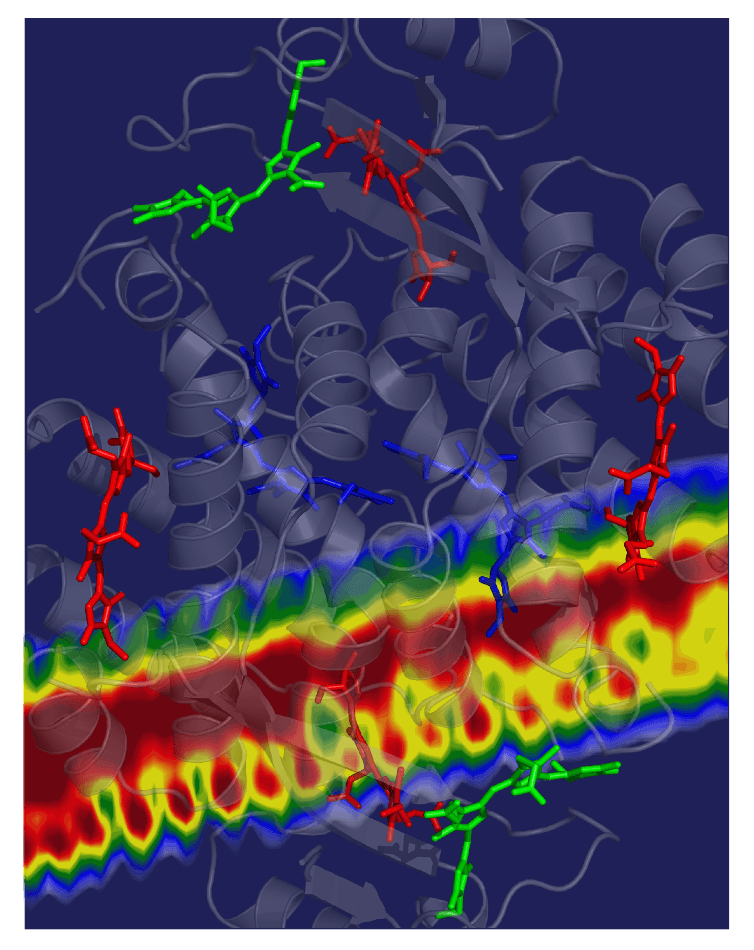Dec 19 2016
 Credit: Scholes’ lab
Credit: Scholes’ lab
For millions of years, photosynthetic algae have been improving their process for capturing light. This has resulted in algae optimizing powerful light harvesting systems - proteins that absorb light to be converted into energy for the plants - that researchers have long been keen to understand and imitate for renewable energy applications.
Recently, a team of researchers at Princeton University have demonstrated a mechanism that improves the light harvesting rates of the cryptophyte algae Chroomonas mesostigmatica. Published in the Chem journal on December 8, these findings provide important insights for the design of artificial light-harvesting systems such as solar energy collectors and molecular sensors.
Cryptophyte algae can often be found living under other organisms that absorb a lot of the sun’s rays. In response, the algae have evolved to thrive on wavelengths of light that are not captured by their neighbors above, mostly the yellow-green colors. The algae collects this yellow-green light energy and pass it via a network of molecules that changes it into red light, which chlorophyll molecules require to perform essential photosynthetic chemistry.
The speed of the energy transfer via the system has both impressed and perplexed the researchers that analyze them. In Gregory Scholes’ lab at Princeton University, predictions were constantly about three times slower than the observed rates.
The timescales that the energy is moved through the protein - we could never understand why the process so fast.
Gregory Scholes, William S. Tod Professor of Chemistry, Princeton University
In 2010, Scholes’ team discovered evidence that the reason behind these quick rates was an extraordinary phenomenon known as quantum coherence, in which molecules could share electronic excitation and transfer energy in accordance with quantum mechanical probability laws rather than classical physics. However, the research team could not clarify exactly how coherence functioned to accelerate the rates until now.
Using an advanced technique enabled by ultrafast lasers, the team was able to measure the light absorption of the molecules and fundamentally track the energy flow through the system. Usually the absorption signals would overlap, making them impractical to assign to specific molecules within the protein complex, but the team was able to sharpen the signals by cooling the proteins to very low temperatures, explained Jacob Dean, lead author and postdoctoral researcher in the Scholes lab.
The researchers studied the system as energy was conveyed from molecule to molecule, from high-energy green light to lower energy red light, with surplus energy lost as vibrational energy. Dean said that these experiments showed a specific spectral pattern that was a ‘smoking gun’ for vibrational resonance, or vibrational matching, between the donor and acceptor molecules.
This vibrational matching enabled energy to be conveyed much faster than it otherwise would be by spreading the excitation between molecules. This effect provided a mechanism for the formerly reported quantum coherence. Taking this redistribution into consideration, the researchers recalculated their prediction and landed on a rate that was approximately three times faster.
Finally the prediction is in the right ballpark. Turns out that it required this quite different, surprising mechanism.
Gregory Scholes, William S. Tod Professor of Chemistry, Princeton University
Going forward, the Scholes lab plans to analyze related proteins to examine if this mechanism is functional in other photosynthetic organisms. In due course, the researchers hope to develop light-harvesting systems with ideal energy transfer by deriving inspiration and design principles from these finely tuned yet very robust light-harvesting proteins. “This mechanism is one more powerful statement of the optimality of these proteins,” Scholes said.